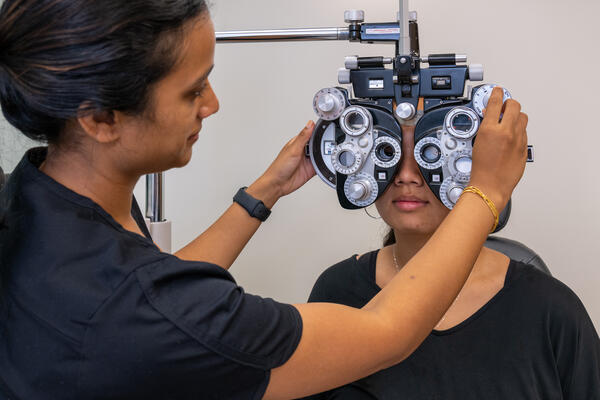Andalusia Pediatrics: Compassionate Care for Your Children
The Benefits And Drawbacks of Various Refractive Surgeries for Boosted Eyecare

LASIK Surgery
LASIK surgical treatment is a commonly done refractive treatment that intends to deal with vision issues such as nearsightedness, astigmatism, and farsightedness. During the procedure, a thin flap is developed on the cornea, and a laser is used to improve the underlying cells, correcting the refractive error.
One of the primary advantages of LASIK surgery is the fast improvement in vision experienced by numerous people. It is necessary for individuals taking into consideration LASIK surgical treatment to undergo a comprehensive examination by an eye care expert to identify if they are ideal candidates for the treatment.
PRK Treatment
The PRK procedure, likewise recognized as Photorefractive Keratectomy, is a sort of refractive surgical procedure that intends to correct vision problems comparable to LASIK surgical procedure. Unlike LASIK, which involves producing a flap in the cornea, PRK services the surface layer of the cornea. Throughout the PRK procedure, the external layer of the cornea, called the epithelium, is eliminated to permit reshaping of the underlying corneal cells with an excimer laser. This improving aids to fix refractive errors such as astigmatism, farsightedness, and nearsightedness.
One of the advantages of PRK over LASIK is that it removes the risk of flap-related difficulties since no flap is developed throughout the surgery. In spite of the longer recovery period, PRK can be a suitable option for individuals seeking vision correction surgery.
SMILE Surgical Procedure
An innovative refractive surgical procedure method getting appeal in the area of ophthalmology is SMILE Surgical treatment. Little Incision Lenticule Extraction (SMILE) is a minimally invasive procedure that remedies vision by improving the cornea using a femtosecond laser. Unlike conventional LASIK surgery, SMILE Surgical treatment involves developing a little cut in the cornea to remove a lenticule, which leads to less interruption to the corneal structure and potentially quicker recovery times.
One of the main benefits of SMILE Surgical treatment is its capacity to treat myopia (nearsightedness) and astigmatism with high precision, causing excellent aesthetic end results for clients. The minimally invasive nature of the treatment also decreases the risk of Click This Link problems such as dry eye disorder, making it a favorable option for people seeking refractive surgical treatment.

LASEK Strategy
Having checked out the advantages and factors to consider of SMILE Surgery, one more noteworthy refractive surgical procedure technique worth checking out is the LASEK Method. LASEK, which stands for Laser-Assisted Subepithelial Keratectomy, is a form of laser eye surgical procedure that aims to correct refractive mistakes such as nearsightedness (nearsightedness), hyperopia (farsightedness), and astigmatism.
Unlike LASIK, LASEK does not involve producing a corneal flap. Rather, during a LASEK procedure, the cosmetic surgeon makes use of a watered down alcohol option to loosen the thin external layer of the cornea, referred to as the epithelium. This layer is after that delicately relocated apart to allow the laser to reshape the underlying corneal cells. When the cornea has actually been reshaped to the wanted degree, the epithelial layer is rearranged.
Among the key advantages of LASEK is that it can be ideal for people with thin corneas that might not be excellent candidates for LASIK. In addition, LASEK generally causes minimal post-operative pain and a quicker healing time contrasted to PRK. However, the aesthetic recuperation procedure with LASEK might be slightly longer than with LASIK.
Implantable Call Lenses
Implantable Contact Lenses provide a long-lasting vision improvement solution for individuals seeking an option to standard call lenses or glasses. These lenses, also called phakic intraocular lenses, are surgically put into the eye to remedy refractive errors such as nearsightedness (nearsightedness), hyperopia (farsightedness), and astigmatism. cardiologist andalusia. Unlike conventional contact lenses that sit on the surface of the eye, implantable call lenses function within the eye itself, offering clear vision without the requirement for everyday upkeep or elimination
Among the crucial benefits of implantable get in touch with lenses is their durability. As soon as put, they can continue to be in the eye forever, providing secure and consistent vision adjustment. In addition, these lenses can be an excellent alternative for people that are bad prospects for laser eye surgical treatment or who like a relatively easy to fix vision improvement treatment.
Nonetheless, implantable call lenses do bring some dangers, including the potential for useful link cataracts or raised eye stress. It is critical for people considering this choice to seek advice from an eye care specialist to establish if implantable call lenses are the appropriate option for their details needs and eye health.
Conclusion
In conclusion, each type of refractive surgery has its very own benefits and drawbacks. LASIK surgical procedure is popular for its quick recovery time, while PRK treatment might be suitable for patients with thin corneas.

Overall, SMILE Surgery offers a promising option for people looking to improve their vision via refractive surgery.